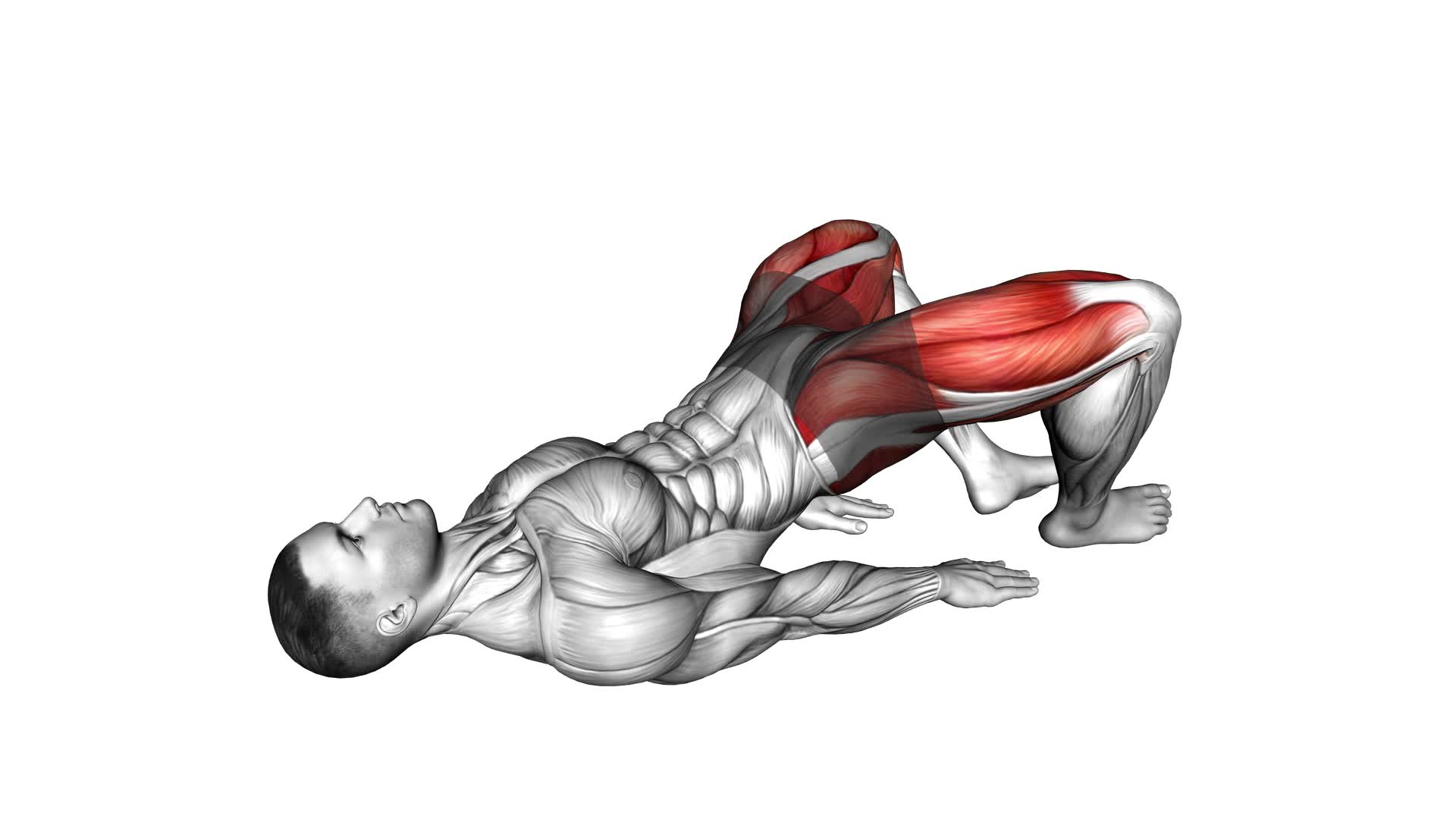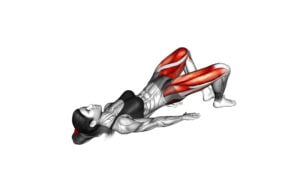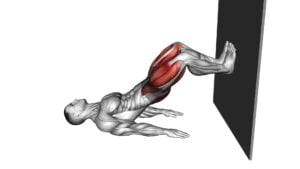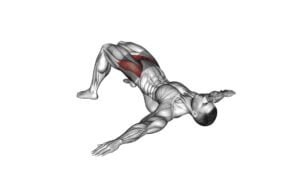Glute Bridge Hip Abduction (male) – Video Exercise Guide & Tips

Looking to strengthen your glutes and improve hip mobility? Check out our video exercise guide and tips for Glute Bridge Hip Abduction specifically designed for males. In this guide, you'll learn the benefits, proper form, and technique, as well as variations and progressions to challenge yourself.
Watch This Exercise Video
Avoid common mistakes and get the most out of your workout. Get ready to feel the burn and achieve those strong, toned glutes.
Let's get started!
Key Takeaways
- Glute Bridge Hip Abduction improves hip strength and stability.
- It targets gluteal muscles, specifically the gluteus medius and minimus.
- It enhances overall athletic performance and reduces the risk of injury.
- Glute Bridge Hip Abduction helps correct muscle imbalances and improve posture.
Benefits of Glute Bridge Hip Abduction
You will experience improved hip strength and stability through Glute Bridge Hip Abduction. This exercise targets the gluteal muscles, specifically the gluteus medius and minimus, which are responsible for hip abduction. By performing Glute Bridge Hip Abduction, you can enhance the strength and stability of your hips, leading to better overall athletic performance and reduced risk of injury.
One of the benefits of Glute Bridge Hip Abduction is that it allows you to target the gluteal muscles in a more isolated manner compared to other exercises. This isolation can help to strengthen these muscles specifically, resulting in improved hip stability and better control of movements in various sports and activities.
Another advantage of Glute Bridge Hip Abduction is its versatility. There are several variations of this exercise, allowing you to target different muscle groups or increase the intensity as needed. For example, you can perform the exercise with a resistance band around your knees to add extra resistance and challenge your glutes even more.
Incorporating Glute Bridge Hip Abduction into your workout routine can also help to correct muscle imbalances and improve your posture. Strong gluteal muscles can help to counteract the effects of weak hip abductors, which are common in individuals who spend a lot of time sitting or have a sedentary lifestyle.
Now that you understand the benefits of Glute Bridge Hip Abduction, let's move on to discussing the proper form and technique for performing this exercise.
Proper Form and Technique
To ensure optimal results and avoid injury, mastering the proper form and technique for Glute Bridge Hip Abduction is crucial. Follow these tips to ensure you're performing the exercise correctly:
- Start by lying on your back with your knees bent and feet flat on the ground, hip-width apart.
- Engage your core and glute muscles as you lift your hips off the ground, creating a straight line from your knees to your shoulders.
- Now, slowly lift one leg off the ground while keeping it straight. Make sure to maintain stability in your hips and pelvis throughout the movement.
- Lower your leg back down and repeat the movement with the other leg.
Correct breathing is essential during the exercise. Inhale as you lower your leg and exhale as you lift it back up. This helps stabilize your core and maximize muscle activation.
Proper form and technique are key for optimal results and to prevent injury. Ensure you maintain a neutral spine throughout the movement, avoiding excessive arching or rounding. Focus on engaging your glutes and maintaining control throughout the exercise.
Equipment and Setup
To properly set up for the Glute Bridge Hip Abduction exercise, gather the necessary equipment and position yourself on a stable surface. The equipment you'll need for this exercise includes a resistance band and a mat or towel for comfort. Resistance bands are beneficial for this exercise as they provide added resistance to target and strengthen your glute muscles. They're also portable and versatile, making them a convenient option for home workouts or when you're on the go.
Before starting the exercise, it's crucial to perform proper warm-up exercises to prepare your body for the movement. Warming up helps increase blood flow to the muscles, improves flexibility, and reduces the risk of injury. Prioritize dynamic warm-up exercises such as leg swings, hip circles, and glute activation exercises to activate your glutes and engage the muscles you'll be targeting during the Glute Bridge Hip Abduction exercise.
Once you have gathered your equipment and completed your warm-up, lie down on your back with your knees bent and feet flat on the ground. Place the resistance band just above your knees, ensuring it's secure and won't slip during the exercise. This setup will allow you to effectively perform the Glute Bridge Hip Abduction exercise and target your glutes for maximum results.
Variations and Progressions
After setting up the equipment and completing your warm-up, it's time to take your Glute Bridge Hip Abduction exercise to the next level by exploring different variations and progressions. These advanced modifications will further challenge and strengthen your glutes, helping you achieve your fitness goals.
Here are four variations and progressions of the Glute Bridge Hip Abduction exercise to incorporate into your routine:
- Single-leg Glute Bridge: Lift one leg off the ground while performing the glute bridge. This variation increases the intensity and targets each glute individually for greater activation and balance improvement.
- Weighted Glute Bridge: Place a barbell or dumbbell across your hips while performing the exercise. The added resistance challenges your glutes even more, promoting muscle growth and strength.
- Resistance Band Glute Bridge: Place a resistance band around your thighs, just above your knees. This variation adds lateral resistance, activating your gluteus medius and helping to stabilize your hips.
- Glute Bridge March: Lift one leg off the ground, then alternate between legs in a marching motion while maintaining the glute bridge position. This progression increases the demand on your glutes and core stability.
Incorporating these variations and progressions into your Glute Bridge Hip Abduction exercise routine will help you continue challenging your glutes and achieving greater strength and stability. Remember to always listen to your body and progress at a pace that feels comfortable and safe for you.
Common Mistakes to Avoid
You should be aware of common mistakes to avoid when performing the Glute Bridge Hip Abduction exercise.
This exercise isn't only beneficial for men but also for women who want to target their glute muscles and improve hip abduction.
One common mistake isn't engaging the glutes properly during the exercise. To increase glute activation, focus on squeezing your glutes as you lift your hips off the ground and as you perform the hip abduction movement.
Another mistake is using too much momentum or swinging the legs during the abduction portion of the exercise. This can take away from the effectiveness of the exercise and put unnecessary strain on the hip joints. To avoid this, maintain control throughout the movement and use a slow and controlled tempo.
Additionally, it's important to avoid arching the lower back excessively during the exercise. This can lead to lower back pain and take away from the targeted glute activation. Keep your core engaged and maintain a neutral spine position throughout the exercise.
Frequently Asked Questions
How Many Times a Week Should I Perform Glute Bridge Hip Abduction Exercises?
To maximize the benefits of glute bridge hip abduction, it's important to consider the frequency of your workouts. When it comes to how often you should perform these exercises, consistency is key. Aim for at least 2-3 sessions per week to see improvements in strength and muscle activation.
However, it's always best to consult with a fitness professional to personalize your workout plan and ensure you're achieving your desired results.
Can Glute Bridge Hip Abduction Exercises Help Improve My Athletic Performance?
Glute bridge hip abduction exercises can definitely help improve your athletic performance. By targeting your glute muscles, these exercises enhance your hip strength, stability, and power, which are crucial for athletic movements like running, jumping, and changing directions.
Incorporating glute bridge hip abduction exercises into your training program can't only enhance your overall athletic performance but also reduce the risk of injury. It's recommended to perform these exercises 2-3 times a week for optimal results.
Are There Any Specific Precautions or Contraindications for Individuals With Lower Back Pain?
When it comes to lower back pain, it's important to take precautions and be aware of any contraindications. Before starting any exercise, it's recommended to consult with a healthcare professional. They can provide guidance on whether glute bridge hip abduction exercises are suitable for you.
Lower back pain can be complex, so it's crucial to listen to your body and avoid any movements that exacerbate the pain. Always prioritize safety and proper form to prevent further injury.
Is It Necessary to Use Resistance Bands for Glute Bridge Hip Abduction Exercises?
To perform glute bridge hip abduction exercises, resistance bands can be helpful but not necessary. They add extra resistance and challenge to the exercise. However, if you don't have access to resistance bands, there are alternative ways to modify the exercise.
For example, you can use ankle weights or perform the exercise on an incline bench. Remember to consult with a fitness professional to ensure you're using proper form and technique.
Can Glute Bridge Hip Abduction Exercises Be Modified for Individuals With Knee or Hip Joint Issues?
Modifications can be made to glute bridge hip abduction exercises for individuals with knee or hip joint issues. By adjusting the range of motion and adding support, you can still benefit from this exercise while minimizing strain on your joints. These modifications can help improve glute strength and stability without exacerbating any existing issues.
It's important to consult with a healthcare professional or a certified trainer to ensure you're performing the modified exercise correctly and safely.
Conclusion
In conclusion, glute bridge hip abduction is an effective exercise for strengthening the glute muscles and improving hip stability. By performing this exercise with proper form and technique, using the appropriate equipment and setup, and incorporating variations and progressions, you can maximize the benefits and avoid common mistakes.
Remember to always consult with a fitness professional before attempting any new exercises to ensure proper execution and prevent injuries.

Author
Years ago, the spark of my life’s passion ignited in my mind the moment I stepped into the local gym for the first time. The inaugural bead of perspiration, the initial endeavor, the very first surge of endorphins, and a sense of pride that washed over me post-workout marked the beginning of my deep-seated interest in strength sports, fitness, and sports nutrition. This very curiosity blossomed rapidly into a profound fascination, propelling me to earn a Master’s degree in Physical Education from the Academy of Physical Education in Krakow, followed by a Sports Manager diploma from the Jagiellonian University. My journey of growth led me to gain more specialized qualifications, such as being a certified personal trainer with a focus on sports dietetics, a lifeguard, and an instructor for wellness and corrective gymnastics. Theoretical knowledge paired seamlessly with practical experience, reinforcing my belief that the transformation of individuals under my guidance was also a reflection of my personal growth. This belief holds true even today. Each day, I strive to push the boundaries and explore new realms. These realms gently elevate me to greater heights. The unique combination of passion for my field and the continuous quest for growth fuels my drive to break new ground.







